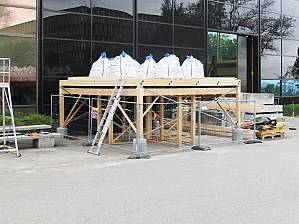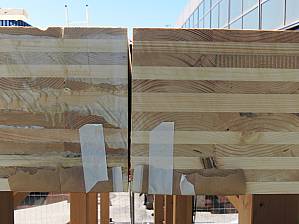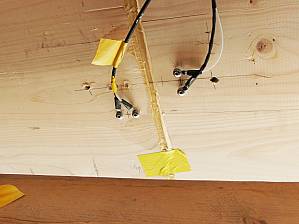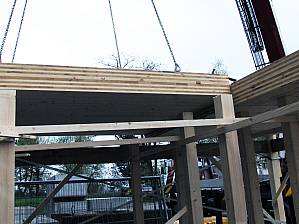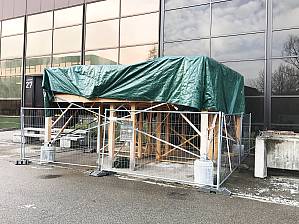TS3 long-term practical trial at ETH Zurich, Zürich
2018
In recent years, the novel Timber Structures 3.0 technology (TS3) has been developed. This technology makes it possible to glue timber components made of solid, glulam or cross-laminated timber on the face side. This allows the creation of point-supported, multi-axis load-bearing slabs or folded structures of any shape and size.
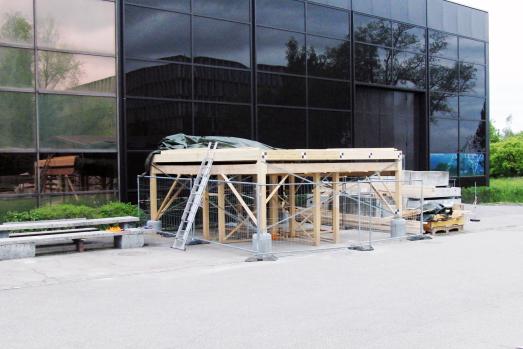
Within the framework of a CTI project in Bern University of Applied Sciences BFH and the Swiss Federal Institute of Technology ETH. ETH, test benches were set up at both universities to research the long-term research into the long-term behavior of the technology.
The endurance test stands are an important step in the approval process for the European and American markets. markets. They also impressively demonstrate the new possibilities for timber construction. demonstrate.
The test rig at the ETH Zurich consists of four cross-laminated timber panels glued together. The roof was loaded with 12 big bags after construction. The total weight of the big bags, 9.6 tons, was applied to the on the roof for one year. This simulated the quasi-permanent loads of a ceiling which allows a live load of up to 500 kg/m².
The test allowed knowledge to be gained about the assembly and casting process. Furthermore, the deformation behavior under changing wood moisture content was analyzed, and thirdly, the vibration behavior of the biaxial load-bearing slab was tested. In the meantime, the test has been successfully completed.
Construction data




